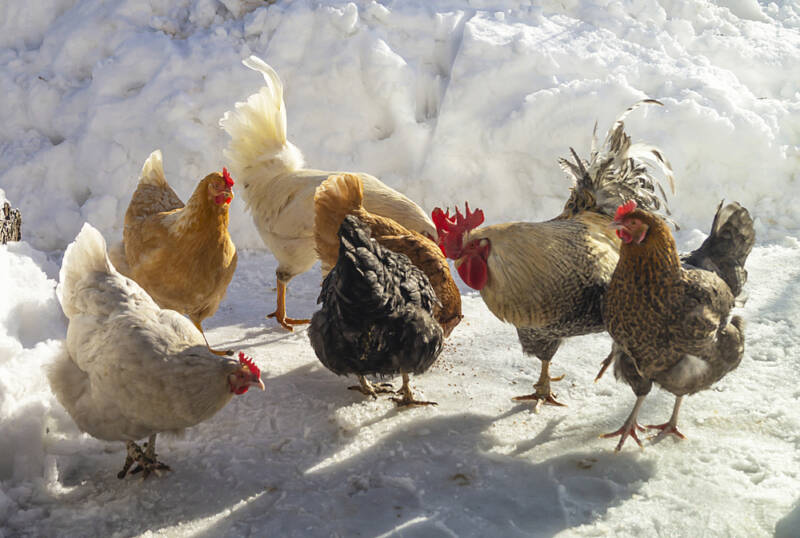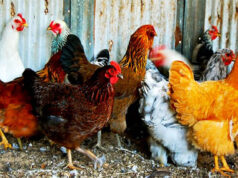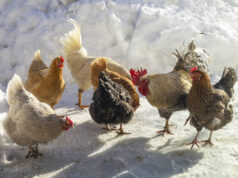Chicken respiratory diseases are a major concern for poultry enthusiasts. Understanding and identifying chicken respiratory disease symptoms promptly can help save your flock. This comprehensive guide covers everything you need to know about these symptoms, their causes, and possible treatments.

What Are Respiratory Diseases in Chickens?
Respiratory diseases in chickens encompass a range of illnesses that affect the respiratory system. These diseases can be caused by bacteria, viruses, fungi, or even parasites. Identifying and addressing these issues early can make a tremendous difference in your chicken’s health.
Common Causes of Respiratory Diseases
Various factors can lead to respiratory diseases in chickens, including:
- Infectious agents such as bacteria and viruses
- Poor ventilation in coops
- High humidity levels
- Stress due to overcrowding or inadequate nutrition
- Environmental irritants like dust and ammonia

Key Symptoms of Chicken Respiratory Diseases
Recognizing the symptoms of respiratory diseases in chickens is crucial for early intervention. Some of the most common chicken respiratory disease symptoms include:
Coughing and Sneezing
Like humans, chickens can exhibit coughing and sneezing when their respiratory system is compromised. These symptoms may be accompanied by nasal discharge.
Labored Breathing
If you observe chickens breathing with an open beak, it can be an indication of labored breathing. This symptom often suggests a severe respiratory issue that requires immediate attention.
Swollen Eyes and Sinuses
Swelling around the eyes and sinuses is a distinct sign of respiratory infection. It can lead to further complications if left untreated.
Reduced Appetite and Weight Loss
Chickens suffering from respiratory diseases often display a reduced appetite, leading to significant weight loss over time.
Cyanosis
A bluish tint to the comb and wattles, known as cyanosis, is a serious indicator of oxygen deprivation caused by respiratory issues.

Diagnosing Respiratory Diseases in Chickens
Proper diagnosis is essential to address chicken respiratory disease symptoms. Here are the steps to diagnose these diseases:
Observe and Record Symptoms
Take note of all observed symptoms. Record details such as the onset, duration, and severity of symptoms. This information will be useful when consulting a veterinarian.
Consult a Veterinarian
A veterinarian can conduct tests such as blood work, cultures, and X-rays to accurately diagnose the issue. It’s important to seek professional help for serious symptoms.
Perform Necropsy
In cases of sudden death, a necropsy (animal autopsy) can be valuable for identifying the cause. This procedure is typically carried out by a qualified professional.

Approved Treatments for Chicken Respiratory Diseases
Treating chicken respiratory disease symptoms promptly can save your flock. Here are some approved treatments:
Antibiotics and Antivirals
Antibiotics can be effective against bacterial infections, while antivirals may be used for viral infections. Always follow the veterinarian’s prescription and guidelines.
Environmental Adjustments
Improving coop ventilation, reducing humidity, and ensuring clean living conditions can help alleviate respiratory symptoms. Additionally, minimize environmental stressors.
Nutritional Support
Provide a balanced diet rich in essential nutrients to support the immune system. Supplements such as vitamins and probiotics can also be beneficial.
Quarantine and Isolation
Isolate affected chickens to prevent the spread of the disease. Ensure the quarantine area is clean and observe strict hygiene practices.
Preventing Respiratory Diseases in Chickens
Prevention is the key to maintaining a healthy flock. Here are some preventive measures:
Vaccination
Vaccinate your chickens against common respiratory diseases. Consult your veterinarian for recommended vaccines.
Routine Health Checks
Regularly check your chickens for any signs of illness. Early detection can prevent the spread of diseases.
Proper Coop Management
Maintain a clean and well-ventilated coop. Avoid overcrowding and ensure proper nutrition for your chickens.
Transferable Respiratory Diseases in Chickens
Some respiratory diseases can be transmitted from chickens to other birds or even humans. It’s essential to be aware of these diseases and take necessary precautions.
Avian Influenza
Also known as bird flu, avian influenza is a highly contagious viral infection. It can spread quickly among birds and can also affect humans.
Newcastle Disease
This viral disease is highly contagious and can cause severe respiratory distress in chickens. It can also spread to other birds and humans.
Important Steps to Take If Your Chickens Show Symptoms
Taking immediate action when you observe chicken respiratory disease symptoms can prevent the spread and severity of the disease:
- Isolate the affected chickens.
- Consult a veterinarian for a proper diagnosis and treatment plan.
- Implement biosecurity measures to prevent the spread of the disease.
- Maintain stringent hygiene practices in the coop.
Maintaining Respiratory Health in Chickens
Maintaining optimal respiratory health in chickens is essential for their overall well-being:
Good Ventilation
Ensure proper ventilation in the chicken coop to reduce the risk of respiratory diseases caused by poor air quality.
Clean Living Conditions
Regularly clean the coop and remove any waste. Use appropriate bedding materials that are less likely to cause respiratory irritations.
Stress Management
Minimize factors that cause stress, such as overcrowding, sudden changes in the environment, and improper handling.
Regular Health Monitoring
Keep an eye on your chickens’ health and take prompt action if you notice any signs of respiratory issues.
FAQs on Chicken Respiratory Disease Symptoms
1. How can I tell if my chicken has a respiratory disease?
You can tell if your chicken has a respiratory disease by observing symptoms such as coughing, sneezing, labored breathing, swollen eyes, and nasal discharge.
2. What should I do if my chicken shows respiratory disease symptoms?
If your chicken shows respiratory disease symptoms, isolate the affected chicken, consult a veterinarian, and follow prescribed treatments. Ensure the coop is clean and well-ventilated.
3. Can respiratory diseases in chickens be prevented?
Yes, respiratory diseases in chickens can be prevented by maintaining good coop hygiene, providing proper nutrition, vaccinating, and managing stress levels.
For more insights, you can always check this link.
Conclusion
Understanding and identifying chicken respiratory disease symptoms are crucial for maintaining a healthy flock. Early detection, proper diagnosis, and timely treatment can make a tremendous difference. Implementing preventive measures such as vaccination and maintaining clean living conditions can help ensure the well-being of your chickens.
For more information about chicken diseases, feel free to visit our other articles on chicken disease symptoms, chicken Marek’s disease, and chicken respiratory disease.
As an Amazon Associate, I earn from qualifying purchases.










